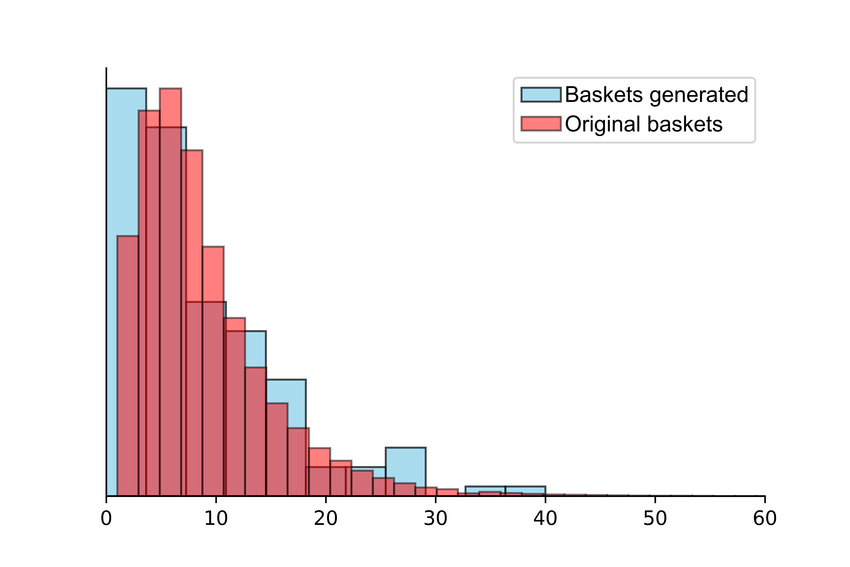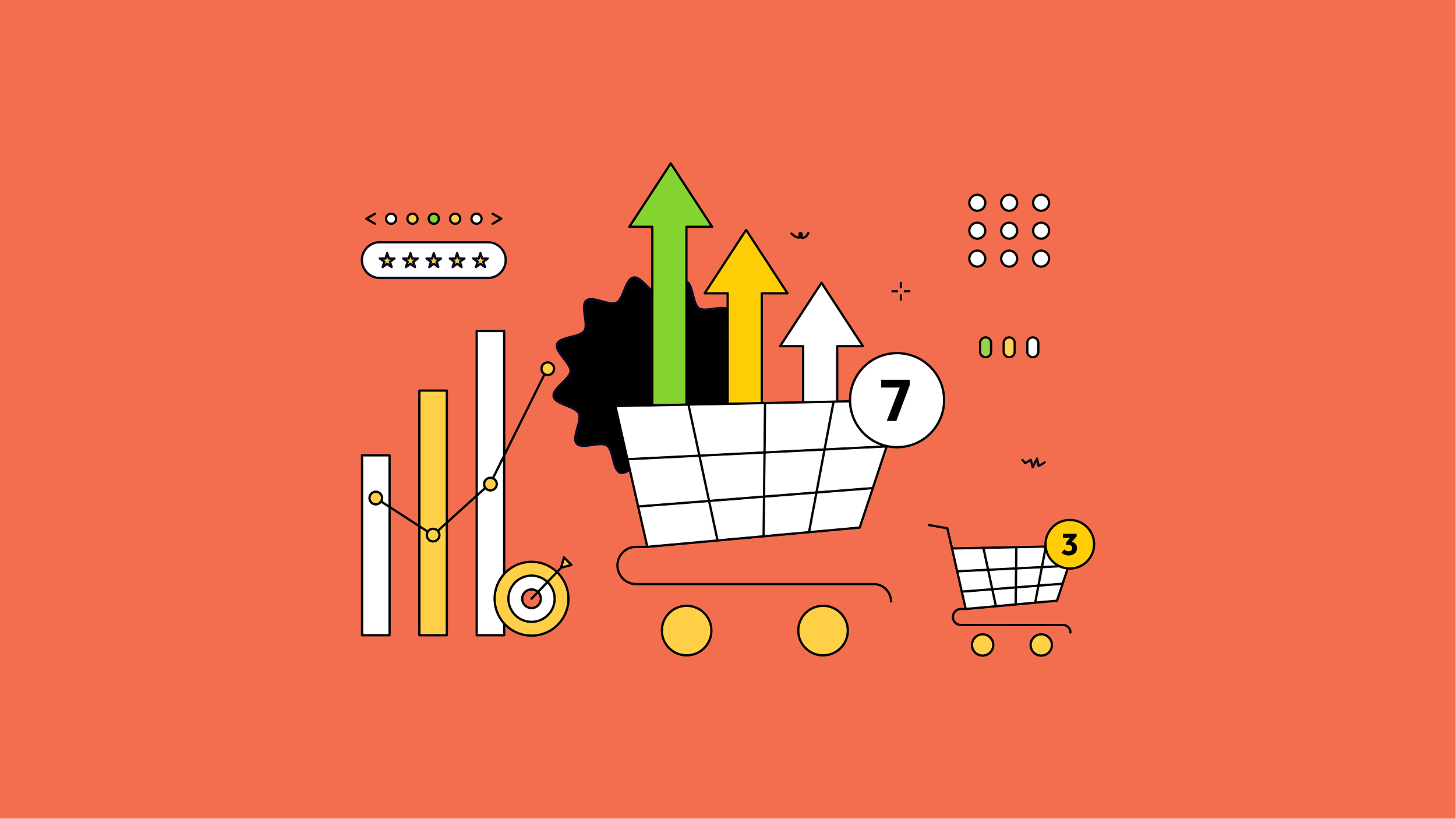Basket Size Analysis
Basket Size Optimization Strategy
Basket Size Analysis is a powerful data-driven strategy that helps businesses optimize their sales performance by analyzing customer purchasing behavior. By evaluating transaction data, businesses can identify patterns in average order value (AOV), frequently bought-together products, and customer spending habits. This analysis, known as the Basket Size Optimization Strategy, enables companies to implement effective upselling, cross-selling, and pricing strategies to increase revenue and maximize profitability. With our expertise, businesses can uncover hidden opportunities to boost conversion rates, improve customer lifetime value (CLV), and enhance overall sales performance.
At Lead Business Consulting, we leverage data analytics, AI insights, and market trends to deliver actionable strategies, ultimately increasing basket size. To ensure maximum impact, our tailored solutions, in turn, seamlessly integrate consumer behavior analysis, demand forecasting, market segmentation, competitive benchmarking, and predictive analytics. As a result, businesses can gain a comprehensive understanding of market dynamics and customer needs. These tools work together to help businesses optimize product bundling, implement dynamic pricing, and launch personalized marketing campaigns. As a result, Basket Size Optimization enables businesses to reduce cart abandonment rates, boost customer retention, and ultimately drive higher revenue growth.
Whether you’re an eCommerce store, retail business, or B2B company, our services ensure that every transaction is optimized for maximum value. By integrating Google Analytics, CRM data, and machine learning algorithms, we help businesses track key performance indicators (KPIs), refine pricing strategies, and enhance customer engagement. If you’re looking to increase sales, improve profit margins, and gain a competitive edge, Lead Business Consulting offers expert consulting for data-driven decision-making.
Stay ahead of the competition with data-driven Basket Size Optimization—maximize revenue, improve customer insights, and drive business growth with our expert consulting services.

What is Basket Size Analysis?
Basket Size Analysis is a data-driven method that, by examining the number of items or total value of products purchased in a single transaction, helps evaluate customer purchasing behavior more effectively. It helps businesses understand consumer buying patterns, optimize pricing strategies, and implement effective upselling and cross-selling techniques to increase revenue. By leveraging transaction data, customer insights, and predictive analytics, businesses can maximize sales, improve customer retention, and enhance overall profitability. This analysis is commonly used in eCommerce, retail, and B2B markets to track average order value (AOV), product bundling opportunities, and shopping trends for strategic decision-making.
Importance of Basket Size Analysis in Business Growth
Basket Size Analysis plays a crucial role in business growth, revenue optimization, and customer retention. By understanding how many products or what value customers purchase in a single transaction, businesses can develop strategies to increase average order value (AOV) and enhance overall profitability. Here’s why Basket Size Analysis is essential for business success:
- Optimizes Pricing Strategies: By leveraging data analytics and predictive modeling, businesses can refine their pricing strategies, discounts, and dynamic pricing to encourage larger basket sizes.
- Increases Revenue and Profit Margins: By analyzing customer purchase behavior, businesses can implement upselling, cross-selling, and product bundling strategies to encourage higher spending per transaction.
- Reduces Cart Abandonment Rates: A well-optimized Basket Size Analysis strategy helps businesses identify and eliminate barriers that prevent customers from completing their purchases, leading to a higher conversion rate.
- Strengthens Competitive Advantage: Businesses that implement data-driven Basket Size Optimization can outperform competitors by offering better deals, personalized marketing campaigns, and loyalty rewards programs.
- Enhances Customer Experience: Understanding what products are frequently bought together allows businesses to offer personalized recommendations and targeted promotions, improving customer satisfaction and loyalty.
By leveraging Basket Size Analysis, companies in e-commerce, retail, and B2B markets can drive sustainable growth, maximize sales, and enhance their overall business strategy for long-term success. 🚀
How to Conduct Basket Size Analysis
- Monitor Purchase Trends: Evaluate the impact of seasonality, discounts, and promotions.
- Analyze Customer Segments: Identify different customer groups based on purchasing patterns.
- Optimize Upselling & Cross-Selling Strategies: Recommend relevant products to increase basket size.
- Collect Transactional Data: Gather data from POS systems, online sales, and customer purchase history.
- Use Data Analytics Tools: Implement AI-driven insights, Google Analytics, and machine learning to derive meaningful insights.

Strategies to Increase Basket Size
Increasing basket size is a powerful way to boost average order value (AOV), maximize revenue, and enhance customer experience. By implementing data-driven strategies, businesses can encourage customers to add more items to their carts and increase overall sales. Here are the top strategies to grow basket size:
Upselling & Cross-Selling:
Recommending premium versions or complementary products during checkout increases the total value of each transaction. For example, an eCommerce store can suggest a higher-tier product or accessories related to the customer’s purchase.
Product Bundling & Discounts:
Bundled deals (e.g., “Buy 2, Get 1 Free”) encourage customers to buy more at a discount, increasing total spend.
Personalized Recommendations:
Using AI-driven analytics, customer purchase history, and real-time data, businesses can suggest products that are highly relevant, leading to higher conversion rates.
Loyalty & Rewards Programs:
By offering exclusive discounts, cashback, or points-based incentives for larger purchases, businesses can effectively motivate customers to buy more in a single transaction. Consequently, this approach boosts overall sales and enhances customer loyalty.
Minimum Purchase Threshold for Free Shipping:
Encouraging customers to spend a certain amount to unlock free shipping is a proven way to increase basket size. For instance, “Spend $50 and get free shipping!” prompts buyers to add extra items to their cart.
Time-Sensitive Offers & Flash Sales:
Creating a sense of urgency with limited-time deals or countdown discounts pushes customers to add more products before the offer expires.
Targeted Email & SMS Campaigns:
Sending personalized email and SMS promotions based on a customer’s past shopping behavior can effectively encourage larger purchases.
Smart Checkout & Post-Purchase Upsells:
Displaying “You May Also Like” or “Frequently Bought Together” suggestions during checkout or post-purchase ensures that customers consider additional products before completing their transaction.
Implementing Basket Size Optimization strategies boosts sales, enhances retention, and maximizes profits, driving long-term growth and market competitiveness.
Benefits of Implementing Basket Size Analysis
Implementing Basket Size Analysis gives insights into customer behavior, helping businesses boost sales, optimize pricing, and improve retention. Here are the key benefits of using for business growth:
Boosts Revenue and Profitability: By analyzing basket size data, businesses can effectively implement upselling and cross-selling strategies. Consequently, these approaches encourage customers to add more items, increasing average order value (AOV) and ultimately boosting revenue.
Improves Customer Experience: Furthermore, Personalized recommendations using buying patterns and paired items enhance satisfaction and greatly boost brand loyalty.
Optimizes Marketing and Promotions: By leveraging Basket Size Analysis, businesses can effectively create targeted discounts, bundles, and promotions. As a result, this strategy ultimately increases repeat purchases and encourages larger transactions.
Enhances Inventory Management: By identifying products often bought together, businesses improve demand forecasting, optimize stock, and reduce overstocking or stockouts.
Increases Conversion Rates: By streamlining the shopping journey, businesses reduce purchase barriers, lower cart abandonment, and improve overall conversion rates.
Strengthens Competitive Edge: Companies that effectively implement Basket Size Optimization, as a result, gain a data-driven advantage over competitors. By offering better value, more appealing product combinations, and dynamic pricing strategies, they can further strengthen their market position.
Drives Long-Term Business Growth: By consistently analyzing and optimizing basket size, businesses can achieve sustainable growth. As a result, they are better positioned to maximize customer lifetime value (CLV) and increase profitability over time.
Integrating Basket Size Analysis helps businesses boost revenue, strengthen customer ties, and stay competitive.

Frequently Asked Questions (FAQs)
1. What is the main goal of basket size analysis?
The primary goal, therefore, is to maximize revenue by increasing the number of items customers purchase per transaction. This can be achieved through strategic pricing, targeted promotions, and personalized recommendations.
2. How does basket size analysis help with pricing strategies?
This approach, therefore, helps businesses understand customer behavior, which, in turn, enables pricing, discounts, and bundles that ultimately boost purchases.
3. What tools are best for basket size analysis?
Some of the most popular tools include Google Analytics, Power BI, Tableau, and, in addition, machine learning algorithms
4. Can small businesses benefit from basket size analysis?
Indeed, small businesses can leverage customer purchase data to optimize pricing, refine marketing strategies, and ultimately increase revenue.
5. How often should businesses conduct basket size analysis?
Regularly analyzing basket size (monthly or quarterly) ensures businesses adapt to changing consumer trends and optimize their strategies accordingly.
By implementing basket size analysis, businesses can not only effectively drive sales but also improve customer satisfaction and, ultimately, maximize profitability. Investing in data-driven decision-making and AI-powered insights can significantly impact revenue growth in both retail and eCommerce sectors.
For More Information Contact Us



